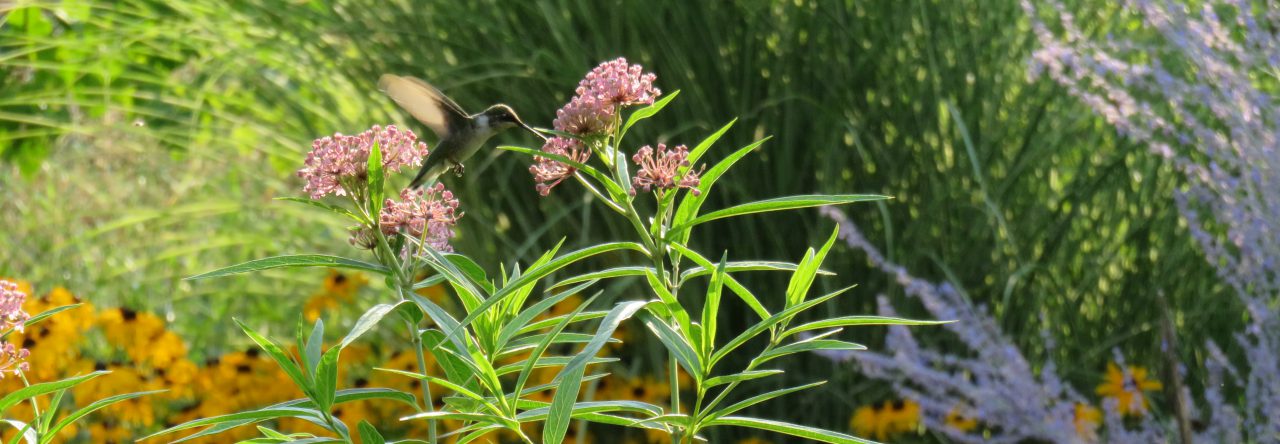When I started seriously gardening over ten years ago, I was mostly interested in color schemes, height and placement of flowers, and having something blooming in all seasons. That is still interesting to me, but since then my focus has moved to growing more food and planting as many native plants as I can. So I still have non-natives in the yard, but I keep adding native plants, as they attract many more pollinators and provide habitat for a greater diversity of wildlife. This time of year the abundance of flowers is really wonderful!

Purple coneflowers, monarda – wild bergamot in the background, and Ratibida pinnata, sometimes called prairie coneflower, yellow coneflower or gray-headed coneflower.

I bought this Ratibida – gray-headed coneflower – at the farmer’s market today and I hope it survives the heat these next few weeks, as I usually don’t plant anything this time of year.

View from the kitchen window.

For some reason I bought a lot of packets of sunflower seeds this year, so I planted them all over the backyard.

Monarch on sunflower. The goldfinches love to eat the seeds.

Two tall varieties of sunflowers in the vegetable garden. The two in the back are so tall that they have not even started to flower yet. Can’t wait to see how big they get.

Besides the sunflowers we have a lot of Echinacea purpurea – purple coneflowers. They seem to be multiplying and the goldfinches love them, too.

Black swallowtail butterfly on purple coneflower – taken from the kitchen window.

The monarda – wild bergamot – really took off this year, and it has been swarming with bumblebees and all kinds of pollinators.

A hummingbird moth or clearwing moth of some sort has been visiting all the flowers.

Liatris, blazing star. I now have two nice clumps growing in the garden.

Rudbeckia hirta, black-eyed susans.

Gateway, Joe Pye weed. I like the look of the flower as it gets ready to open.

The pollinators like the Joe Pye weed when all the flowers are open and messy. This is an ailanthus webworm moth.

The fennel plant is now taller than I am and blooming, attracting a wasp and an ant to the nectar.

The male house finch can be seen now and then snacking on the sedum, which has not started blooming yet.

Did the robin enjoy the bath? Sparrows never miss a chance to join the fun.

But who is this visiting the garden at dawn?

Is this stealthy, fat neighbor cat looking for a bird, a rabbit, a squirrel, or a chipmunk? Salvia blue hill flowers in the background.

I found two of these large bugs/beetles on the stalk of my new gray-headed coneflower after I planted it. Do cats eat those kinds of bugs? Or do birds eat them?

Common buckeye butterfly we saw on a walk last week. I see monarchs just about every day in the summer in my yard, but there are many butterfly species I rarely see because they like a variety of host plants that I probably don’t have in my garden. It is just a reminder that wild habitats need protection.





























































































































